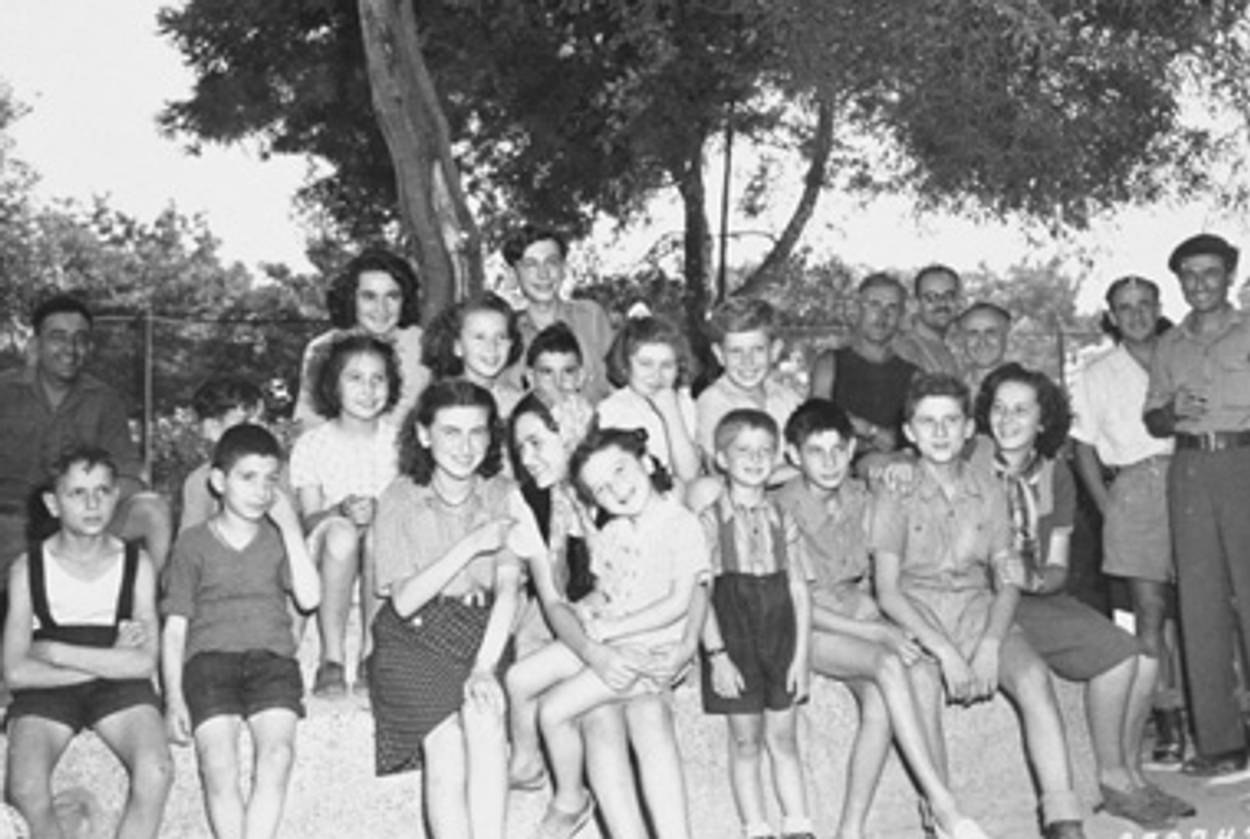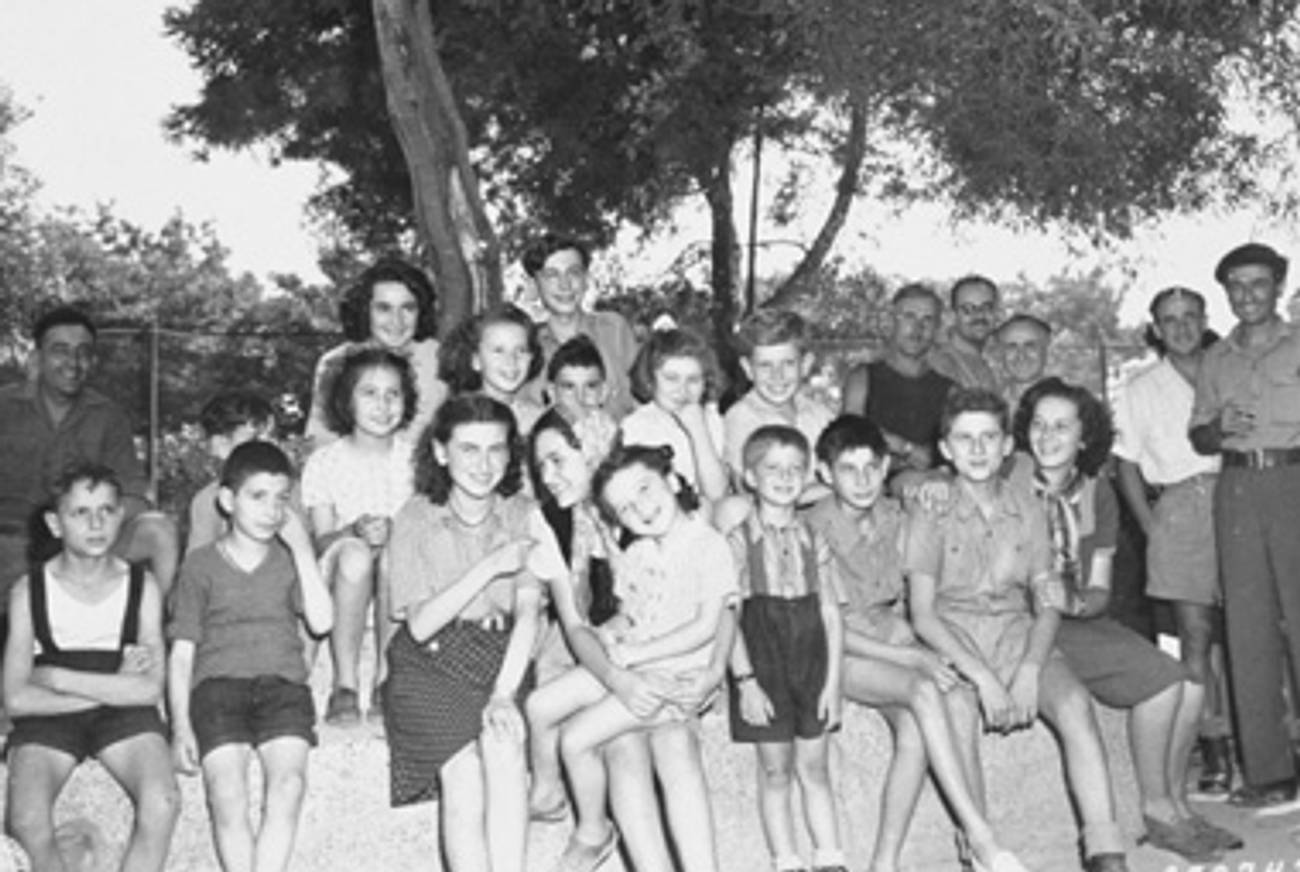Lost and Found
In The Lost Children, Tara Zahra tells the heartbreaking stories of child survivors of World War II, whose fate was often decided by ideological battles, policy debates, and lingering ethnic tensions




At the end of World War II, several hundred teenage boys who had managed to survive Buchenwald were invited by the French government to recuperate at a group home near Paris. One evening, the Buchenwald boys, as they became known, were served Camembert cheese as a special treat for dessert. To the shock of the (Jewish) staff, the boys began hurling the Camembert at the walls: Unfamiliar with the runny, smelly cheese, they believed that they were being served poisoned food, or else rotten food that wasn’t good enough for ordinary children.
This incident, recounted by Tara Zahra in her superb new book The Lost Children: Reconstructing Europe’s Families After World War II (Harvard), is almost comic. But it hints at the profound challenges that faced the social workers and psychologists who made it their mission to help the youngest victims of the war. With the best will in the world, how could you gain the trust of children who had spent their youth in a place like Buchenwald? Even the experts, Zahra shows, despaired of the task.
One observer from the UNRRA—the United Nations Relief and Rehabilitation Administration, the chief agency dealing with postwar displaced persons—noted that the young Holocaust survivors exhibited “poor work attitudes, cheating, lack of respect for personal property of others … extremes of aggressiveness and shyness, and abnormal sex behavior.” Another decided that the boys “were true psychopaths, cold and different by nature, and that this was the reason they were able to survive camp life.” In these inhuman-sounding judgments, we surely hear the desperate frustration of social workers—all Jewish themselves—up against a tragedy too deep to fathom or cure.
What to do about Jewish children after the Holocaust was one of the most intractable problems facing postwar Europe. The standard solutions for displaced children were family reunification, when immediate relatives could be traced, or at least repatriation. But the 175,000 Jewish children who survived the war—out of a prewar population of 1.5 million—had usually lost their entire families; and they had no desire to return to countries where anti-Semitism was still rampant. Jewish survivors congregated in Displaced Persons camps, forbidden to go to Palestine (where the British blocked all Jewish immigration) or America (where harsh immigration laws had the same effect). In the meantime, the birthrate in the DP camps skyrocketed, in a sign of the survivors’ determination to go on living.
Almost every one of those Jewish children had lived through events that the imagination can hardly grasp. Zahra draws on the testimony of Ruth Kluger, who was born in Vienna in 1931; she and her mother were deported to Theresienstadt and then to Auschwitz. On their first night in the camp, Kluger remembered, “My mother explained to me that the electric barbed wire outside was lethal and proposed that she and I should get up and walk into that wire. I thought I hadn’t heard correctly. … I was twelve years old, and the thought of dying, now, without delay, in contortions, by running into electrically charged metal on the advice of my very own mother, whom God had created to protect me, was simply beyond comprehension.”
After the war, Jewish children were not alone in their suffering. As Zahra makes clear in this wide-ranging, exceptionally well-researched study, there wasn’t a country in Europe—victor or vanquished, democratic or fascist or Communist—where children had not been displaced, starved, sickened, or killed in large numbers. In Germany, Allied bombing had destroyed millions of homes, and the invading Red Army had caused millions of civilians to flee; as a result, some 8 million German children were homeless by the time the war ended. So were 6.5 million children in the USSR and more than a million in France.
Even in Britain, which was never invaded by the enemy, half of all schoolchildren had been evacuated from cities during the war, as part of “Operation Pied Piper.” This step was seen as necessary to save children from German bombing, but as Zahra shows, influential child psychologists like Anna Freud and John Bowlby saw evacuation as a potentially life-changing trauma. Indeed, the process of evacuation, as Zahra describes it, sounds horribly ill-considered and unnecessarily cruel. Children, many of them from poor families in London, would arrive in a country town and stand in a group while host parents picked them out: “The scene which ensued was more akin to a cattle- or slave-market than anything else,” one schoolteacher observed.
In Anna Freud’s view, maternal deprivation was a far more serious trauma than bombing: “The war acquires comparatively little significance for children so long as it only threatens their lives. … It becomes enormously significant the moment it breaks up family life and uproots the first emotional attachments of the child within the family group.” In fact, one of Zahra’s claims in The Lost Children is that our current orthodoxies about child-rearing—above all, the emphasis on early “attachment” between mother and child, fostered by breast-feeding, co-sleeping, and constant physical proximity—can be traced to psychologists’ responses to such wartime traumas. Postwar Europe, she writes, was “a moment in which basic ideals of family and childhood were reinvented.”
But it would take a different book, one more strictly focused on cultural and social history, to prove such an ambitious claim. Zahra is really less interested in the history of child psychology than in the ways children, during and after World War II, became proxies for politics and ideology. This could be seen as early as the Spanish Civil War, when both the Republicans and the Nationalists sent children to France for refuge. After Franco’s victory in 1939, the Spanish government demanded that these children be returned, and the debate became a way of continuing the war itself: Leftists and labor unions opposed returning children to fascist Spain, while rightists and the Catholic Church insisted on it. (Imagine the Elián Gonzáles case, multiplied by tens of thousands.) Once France fell under Nazi occupation, Franco sent raiding parties to simply kidnap the children.
After 1945, this kind of ideological battle took place all over Europe. In Poland, the Nazis had made a practice of seizing children whom they deemed Aryan and handing them over to German parents. Naturally the postwar Polish government pressed for the return of these children, seeing the Nazi kidnappings as a tool of genocide. But what if a child had been seized as an infant, and grown up knowing no family but its German foster parents? Would it be in the best interests of the child to return it to Poland, where its biological parents might no longer be alive?
Take the case of Janina and Kazmierz Mackowiak, who were taken from a Polish orphanage during the war, renamed Johanna and Fritz, and given to a childless German couple named Coppenrath. After the war, the Coppenraths wanted to legalize the adoption, but the children were seized and sent back to Poland against their will. They immediately fled and spent two months walking back to Germany to be with the only parents they knew. Did justice require righting a Nazi crime, even at the price of wronging its victims? It’s a question fit for a Greek tragedy, and The Lost Children shows that thousands of similarly insoluble cases arose across the continent.
Every country claimed that it wanted to repatriate its lost children in the children’s own best interest. Many psychologists argued that a Polish child could only thrive in Poland, a Spanish child in Spain. Zahra quotes one relief worker insisting on “how much the children need a country of their own if they are to be psychologically normal and feel ‘like other people.’ ” At the same time, nations also saw children as a crucial geopolitical asset that they could not afford to forfeit. In a postwar Europe where Germany remained the most populous country, France and Poland and Czechoslovakia believed that rapid population growth was a matter of national survival.
Zahra shows that this could lead to bizarre ironies. A year after throwing off German occupation, for instance, the French were encouraging young Germans to immigrate to France, on racial grounds that the Nazis could have approved: “An addition of a reasonable quantity of German blood could be particularly precious … [to] compensate for the excessive flow of Latins and Slavs.” Postwar Czechoslovakia expelled millions of Germans from its borders, creating a huge population deficit, even though many of those expelled were actually the Czech-speaking children of mixed Czech-German marriages.
No people needed to reclaim its surviving children more urgently than the Jews, and this led to its own complications. When Catholic Poles who had sheltered Jewish children during the Holocaust discovered that Jewish relief agencies were willing to pay for their return, what Zahra describes a “a bidding war” broke out. One agency had to pay $1,000 to get the address of a hidden Jewish child. In France, there was the sensational Finaly Affair, in which a Catholic teacher forcibly baptized two Jewish boys under her care, then spirited them away to Spain rather than return them to their aunt.
Jewish children who were reclaimed had to be cared for and educated; and this too, Zahra shows, became a contested issue. Ordinarily, UNRRA social workers preferred to return all refugee children to their parents, when possible. But many Jewish activists argued that it was both psychologically and politically better to place surviving children in group homes or kibbutzim, where the education on offer was frankly Zionist. Zahra quotes one Jewish teacher defending this practice: “Indoctrination may not be good for normal children in normal surroundings. But what is normal here? … A crooked foot needs a crooked shoe.” In the end, Zahra writes, “many UN workers and American authorities came to embrace the Zionist solution for Jewish refugee children.” They were persuaded by the kind of harsh, irrefutable logic another Zionist teacher employed: “The children have nothing, nothing. What should we talk about—the blessings of Poland? They know them. Or the visas for America? They can’t get them. The map of Eretz [Israel] is their salvation.”
Adam Kirsch is a poet and literary critic, whose books include The People and the Books: 18 Classics of Jewish Literature.
Adam Kirsch is a poet and literary critic, whose books include The People and the Books: 18 Classics of Jewish Literature.